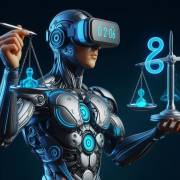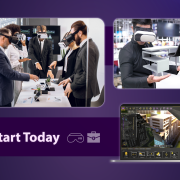In the fast-paced world of virtual reality (VR), the competition for specialized talent is intensifying, making talent retention a critical concern for service providers. As the demand for skilled professionals continues to surge, high turnover rates can jeopardize project continuity and hinder organizational growth. To cultivate sustainable teams, VR service providers must confront the challenges associated with employee retention and foster an environment where individuals feel appreciated and supported. This blog will delve into the factors contributing to talent turnover in the VR industry and highlight how user-friendly tools like SimLab, along with comprehensive team support, can pave the way for long-term stability and success.

The Challenges of High Turnover Rates
- Competitive Job Market: The VR industry is highly competitive, with many companies vying for the same pool of skilled professionals. This competition can lead to frequent job changes as employees seek better opportunities, benefits, and working conditions.
- Skill Shortages: The specialized nature of VR development means that skilled talent is scarce. When employees leave, organizations may struggle to find qualified replacements, resulting in project delays and increased workloads for remaining team members.
- Burnout and Job Dissatisfaction: High-pressure environments, tight deadlines, and a lack of support can contribute to employee burnout. When team members feel overwhelmed and unsupported, they are more likely to seek employment elsewhere, further exacerbating turnover issues.

Solutions for Building Sustainable Teams
To combat the challenges of high turnover rates, VR service providers can implement strategies that promote retention and support their teams effectively:
- Simplifying Processes with User-Friendly Engines Like SimLab:
One way to retain talent is by streamlining development processes. SimLab offers user-friendly software solutions that reduce complexity and allow teams to focus on creativity rather than grappling with cumbersome tools. By simplifying workflows, employees can be more productive and experience less frustration, contributing to higher job satisfaction. The ease of use of SimLab’s tools enables developers to bring their ideas to life quickly, fostering a sense of achievement that can encourage them to stay with the company.
Moreover, SimLab’s interoperability with various CAD formats, including .obj, .stl, and even more complex ones like JT and USDZ, allows users to efficiently manage and visualize 3D assets across multiple platforms. These tools integrate seamlessly with VR hardware such as Oculus and Pico, ensuring that 3D models are directly usable in VR environments.
- Providing Comprehensive Support for Development Teams:
Supportive work environments play a crucial role in talent retention. VR service providers can foster a culture of support by providing training, resources, and mentorship opportunities for their teams. This includes regular check-ins, access to skill development programs, and encouragement for professional growth. By investing in their employees’ success, organizations can create a sense of loyalty and commitment, reducing the likelihood of turnover. - Encouraging Work-Life Balance:
Promoting a healthy work-life balance is essential for retaining talent. Flexible working arrangements, remote work options, and understanding of personal commitments can help employees feel valued and respected. When team members can balance their professional and personal lives, they are less likely to experience burnout and more likely to remain loyal to their organization.

Conclusion
High turnover rates in the VR industry present a significant challenge for service providers looking to build sustainable teams. By simplifying processes with user-friendly tools like SimLab and providing comprehensive support for development teams, organizations can create an environment where employees feel valued and motivated to stay. In a competitive job market, investing in talent retention is not just a strategy for success; it is essential for the long-term health and growth of VR service providers.
References
- SimLab: The All-In-One Solution for Virtual Reality Collaboration
- SimLab: The Key to CAD to Virtual Reality Conversion
- Turner, D. (2023). The Importance of Employee Retention in the VR Industry. Journal of Virtual Reality & Augmented Reality, 5(2), 45-60.
- McKenzie, K. (2022). Creating a Positive Work Environment: Strategies for Retaining Talent. HR Insights. Retrieved from HR Insights
-

1 What’s Next for VR Providers? Future Trends and Innovations
-

2 Scaling VR Solutions for Large and Small Companies: A Strategic Approach
-

3 Security Concerns in VR: Safeguarding Data and Intellectual Property
-

4 Integration with Existing Tools: A Seamless Workflow for VR Service Providers
-

5 Content Creation Struggles: Balancing Quality and Time in VR/AR Projects
-

6 Unleashing Your VR business with SimLab VR Platform

